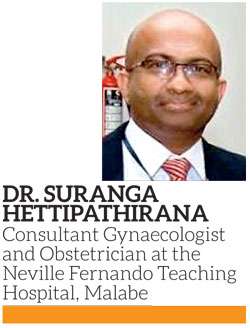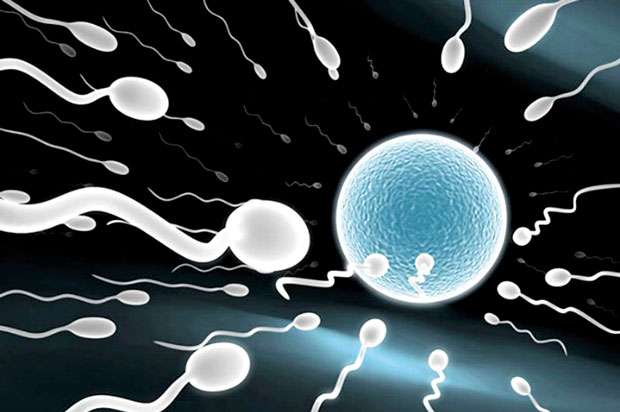01 Feb 2019 - {{hitsCtrl.values.hits}}

 The next biggest dream of a couple after getting married is to give birth to a child and raise a family. However, there are many couples who suffer big time as the wife finds it hard to conceive. Some of these couples have been trying for years and years without any result and unfortunately this issue has reached a level which creates disputes among partners, often leading to divorce or separation.
The next biggest dream of a couple after getting married is to give birth to a child and raise a family. However, there are many couples who suffer big time as the wife finds it hard to conceive. Some of these couples have been trying for years and years without any result and unfortunately this issue has reached a level which creates disputes among partners, often leading to divorce or separation.
The ultimate goal of this article is to create awareness on sub fertility, reasons behind it and the treatment options available, so that no one would be crying behind curtains-not knowing when to seek help and how to proceed with in terms of getting medical help. Sub fertility, according to World Health Organization, is a disease of the reproductive system which amounts to the failure of achieving clinical pregnancy after 12 months or more of regular unprotected sexual intercourse. To discuss more on this topic and shed light on ‘must-knows’ of sub fertility, we have today’s reproductive health session with Dr. Suranga Hettipathirana, Consultant Gynecologist and Obstetrician at the Neville Fernando Teaching Hospital.

“Sub-fertility in simple words is the inability to conceive following regular unprotected sexual intercourse for one year or more. Here, ‘regular and unprotected’ means having sexual intercourse 3-4 times per week and ejaculating inside the female without using any method of contraception (condoms, pills). A normal couple, following this way would definitely conceive within 3-4 months or latest 1 year and if it doesn’t happen, probably the underlying issues should be sorted out” explained Dr. Hettipathirana.
Following sexual intercourse, millions of sperms enter the female womb through the vagina and travel to the fallopian tube. One or two of them will fertilize the egg, which has been released by the woman’s ovary by that time and the fertilized egg will get implanted in the endometrium of the womb. This is how conception takes place and one or more factors, interfering with this natural process will result in sub-fertility.“Usually, when it comes to sub fertility, many people in our society have a misconception that the fault is in the hands of female and should be due to some problem with her and her body. That is completely wrong. Causes of Sub fertility can equally be found in the male partner too (45-50%) and that is why we investigate on both the partners when they come for treatment”
Fertile period
This is when an egg, released from the ovaries is awaiting fertilization. Identifying the most fertile period of a woman can do miracles when dealing with this issue. Most couples who claim to be carrying out regular sexual intercourse might be missing the most fertile period-i.e consider first day of your menstrual bleeding of each month as day 1 in a cycle and the fertile period is from day 11-16.
Risk factors for sub fertility

Female factors
1. Ovulation disorders are known to be the commonest cause for sub-fertility.
2. Obstruction of Fallopian tubes - This can interfere with effective transportation of the ovum and this can occur due to scars following pelvic surgery, previous infections, sub-serosal fibroids, endometriosis and previous sterilization treatments. Patency of the tubes can be assessed by Hysterosalphingogram and Laparoscopic dye test and treated accordingly.
3. Defects inside the womb or its lining.
Adhesions of the endometrial lining due to previous surgeries or fibroids distorting the womb cavity can be detected by Ultra sound scan or Hysteroscopy. Removal of adhesions and fibroids can most of the time replace the anatomy of the womb, restoring fertility.
4.Vaginismus - This is the involuntary contraction of muscles around the opening of vagina giving rise to painful sexual intercourse and treated effectively with timely medical interventions.
Most of these pathologies related to females can be identified by querying on the menstrual cycle.
Male factors
Low sperm count, poor quality of sperms (motility, volume and morphology) and abnormal semen which is unable to carry sperms into the female genital tract can result in sub-fertility and can be treated most of the time with timely interventions. Retrograde ejaculation, premature ejaculation, past history of mumps and testicular surgeries in males should be queried as they can often go unnoticed despite the major contributory role.
“External examination of testis and penis followed by Semen Analysis and ultra sound scan can often reveal underlying issues in cases where mere medical treatments fails in sorting out the problem. In case where the sperm quality is low, selecting the best sperms and placing it in the uterus through intra-uterine insemination – IUI, close to the egg through in-vitro fertilization -- IVF or injecting the sperm into the egg through intra-cytoplasmic sperm injection – ICSI can be done” said Dr. Hettipathirana.
Treatment options
Managing sub-fertility depends on the underlying issue so, going deeper into the history of both male and female is vital. The good news is almost all sub-fertility types have a treatment option and while we, health care professionals work on what is more suitable for you, it’s your part to seek medical advice as early as possible.
Take home message
Most couples experiencing this problem, suffer alone without seeking medical help, usually due to social stigma and embarrassment. But what you should be aware of is that thanks to latest technology-no couple would be left behind and everybody will get an opportunity to try at his or her level best to conceive with optimum support and guidance from multidisciplinary teams-related to health care-with the magic phrase being ‘early advice and action right on time’ concludes
Dr Hettipathirana.
22 Dec 2024 56 minute ago
22 Dec 2024 1 hours ago
22 Dec 2024 1 hours ago
22 Dec 2024 6 hours ago
22 Dec 2024 8 hours ago